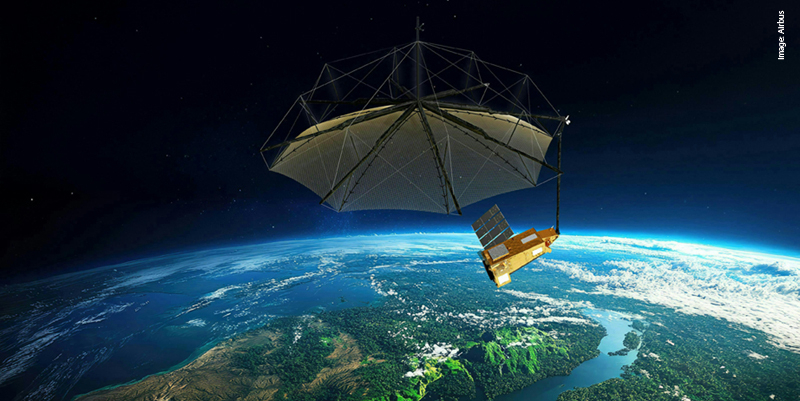Italian utility implements system for enterprise-wide access to critical documents
AEM Cremona geospatial systemâs background map highlights documents checked out for modification
The Azienda Energetica Munipale (AEM) Cremona utility company is owned by the municipality of Cremona, Italy, a historical city in the north of Italy approximately 90 kilometers from Milan. AEM Cremona provides electric, gas, water, wastewater, and district heating services, along with public lighting, road signals, and traffic lights. Roughly 50 percent of Cremona is classified as an archeological zone, which means special care is needed when excavation or construction work is performed within its boundaries. As a result, the utility must keep extremely accurate documentation of its networks to facilitate maintenance activities. At the same time, it is critical that network information be accessible at all levels of the organization to facilitate proper decision-making.Unfortunately, these requirements were not being met by AEM Cremonaâs existing systems. Its network planning and management operation was dealing with multiple archives of the same information, making it difficult to locate information to plan network development and expensive to update network management information. Likewise, the utilityâs maintenance group was having problems finding information in a timely manner, which led to still higher costs. The company as a whole needed a way to manage and publish administration documents and files about the network and territory. To resolve all of these issues and save the utility time and money, AEM Cremona defined a set of requirements for a new information management environment. The project included a common database and a single database framework that could easily manage data from different sources. The ability to update data according to enterprise standard procedures was also needed, as was an inexpensive way to publish technical documents and maps to anyone in the company. AEM Cremona also wanted a high level of integration among the components of the solution and an environment that could be easily customized and managed. In addition, realizing that technology alone could not get the job done, the utility stipulated that the solution provider be a company that would assure long-term support and come complete with a reliable team in Italy to provide implementation services. The project was slated to be implemented in three phases. The first phase, which is now complete, includes software solutions to implement a geospatial database for electric (medium and high voltage), water, gas, wastewater, district heating, public lighting, road signals, and network infrastructure. The network information is linked to consumer information and updates occur through various methods. One method involves a survey process that collects data in the field and uses this collection to update the geospatial database. The system, which is called SIT AEMCR, is used for creation, issuing, and circulation of the technical documentation associated with mapping. It also provides links to other AEM Cremona business databases and supports network outage management by providing quick access to consumer and network operations history.The managed environment, which is built on ProjectWise, uses the Bentley Geospatial Management extension to provide a spatial user interface to the information managed by ProjectWise. This makes it simple for users to query and locate information. The editing environment is built on the XFM (XML feature modeling) capabilities of MicroStation. Applications using XFM technology are rules-based to help detect inconsistencies in the network -- such as a cable not connected to a substation. The information is subsequently housed in Oracle Spatial. The second phase, which involves the development of analysis applications, is in progress. Said Guido Duchi, who manages the SIT AEMCR project, âThanks to the ProjectWise implementation, we have been able to solve various enterprise problems and optimize the way we share and manage the information. ProjectWise also allows us to manage the network validation phases.âCommenting on the improved quality of internal and external services due to process optimization, Duchi added: âWe are able to save time and better perform our tasks. We solved interoperability problems and can now import, read, and edit native data from different sources. In addition to being the design tool used by our engineering department, MicroStation is extremely easy to link to external databases. Design and network management applications can be completely integrated.âAEM Cremona plans to take advantage of Bentleyâs server applications to publish SIT AEMCR information on the Web during the final phase. Managed access for AEM Cremona users, partners, and authorized consumers is planned, as is integration with SAP. __________________ProjectSIT AEMCROrganizationAEM CremonaBE Awards CategoryGeospatial UtilitiesProject ObjectiveBuild geospatial environment to manage the multiple activities governed by AEM Cremona, integrate applications for a common database framework, and easily manage data from multiple sources with appropriate access for multiple levels of employees
The Azienda Energetica Munipale (AEM) Cremona utility company is owned by the municipality of Cremona, Italy, a historical city in the north of Italy approximately 90 kilometers from Milan. AEM Cremona provides electric, gas, water, wastewater, and district heating services, along with public lighting, road signals, and traffic lights. Roughly 50 percent of Cremona is classified as an archeological zone, which means special care is needed when excavation or construction work is performed within its boundaries. As a result, the utility must keep extremely accurate documentation of its networks to facilitate maintenance activities. At the same time, it is critical that network information be accessible at all levels of the organization to facilitate proper decision-making.Unfortunately, these requirements were not being met by AEM Cremonaâs existing systems. Its network planning and management operation was dealing with multiple archives of the same information, making it difficult to locate information to plan network development and expensive to update network management information. Likewise, the utilityâs maintenance group was having problems finding information in a timely manner, which led to still higher costs. The company as a whole needed a way to manage and publish administration documents and files about the network and territory. To resolve all of these issues and save the utility time and money, AEM Cremona defined a set of requirements for a new information management environment. The project included a common database and a single database framework that could easily manage data from different sources. The ability to update data according to enterprise standard procedures was also needed, as was an inexpensive way to publish technical documents and maps to anyone in the company. AEM Cremona also wanted a high level of integration among the components of the solution and an environment that could be easily customized and managed. In addition, realizing that technology alone could not get the job done, the utility stipulated that the solution provider be a company that would assure long-term support and come complete with a reliable team in Italy to provide implementation services. The project was slated to be implemented in three phases. The first phase, which is now complete, includes software solutions to implement a geospatial database for electric (medium and high voltage), water, gas, wastewater, district heating, public lighting, road signals, and network infrastructure. The network information is linked to consumer information and updates occur through various methods. One method involves a survey process that collects data in the field and uses this collection to update the geospatial database. The system, which is called SIT AEMCR, is used for creation, issuing, and circulation of the technical documentation associated with mapping. It also provides links to other AEM Cremona business databases and supports network outage management by providing quick access to consumer and network operations history.The managed environment, which is built on ProjectWise, uses the Bentley Geospatial Management extension to provide a spatial user interface to the information managed by ProjectWise. This makes it simple for users to query and locate information. The editing environment is built on the XFM (XML feature modeling) capabilities of MicroStation. Applications using XFM technology are rules-based to help detect inconsistencies in the network -- such as a cable not connected to a substation. The information is subsequently housed in Oracle Spatial. The second phase, which involves the development of analysis applications, is in progress. Said Guido Duchi, who manages the SIT AEMCR project, âThanks to the ProjectWise implementation, we have been able to solve various enterprise problems and optimize the way we share and manage the information. ProjectWise also allows us to manage the network validation phases.âCommenting on the improved quality of internal and external services due to process optimization, Duchi added: âWe are able to save time and better perform our tasks. We solved interoperability problems and can now import, read, and edit native data from different sources. In addition to being the design tool used by our engineering department, MicroStation is extremely easy to link to external databases. Design and network management applications can be completely integrated.âAEM Cremona plans to take advantage of Bentleyâs server applications to publish SIT AEMCR information on the Web during the final phase. Managed access for AEM Cremona users, partners, and authorized consumers is planned, as is integration with SAP. __________________ProjectSIT AEMCROrganizationAEM CremonaBE Awards CategoryGeospatial UtilitiesProject ObjectiveBuild geospatial environment to manage the multiple activities governed by AEM Cremona, integrate applications for a common database framework, and easily manage data from multiple sources with appropriate access for multiple levels of employees
Author: Christine Byrne
Bio.: Bentley Systems, Incorporated
For more information visit:
Subscribe to our newsletter
Stay updated on the latest technology, innovation product arrivals and exciting offers to your inbox.
Newsletter

